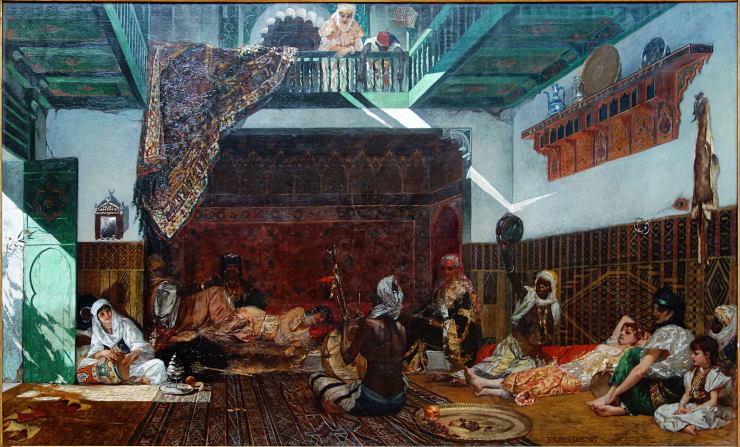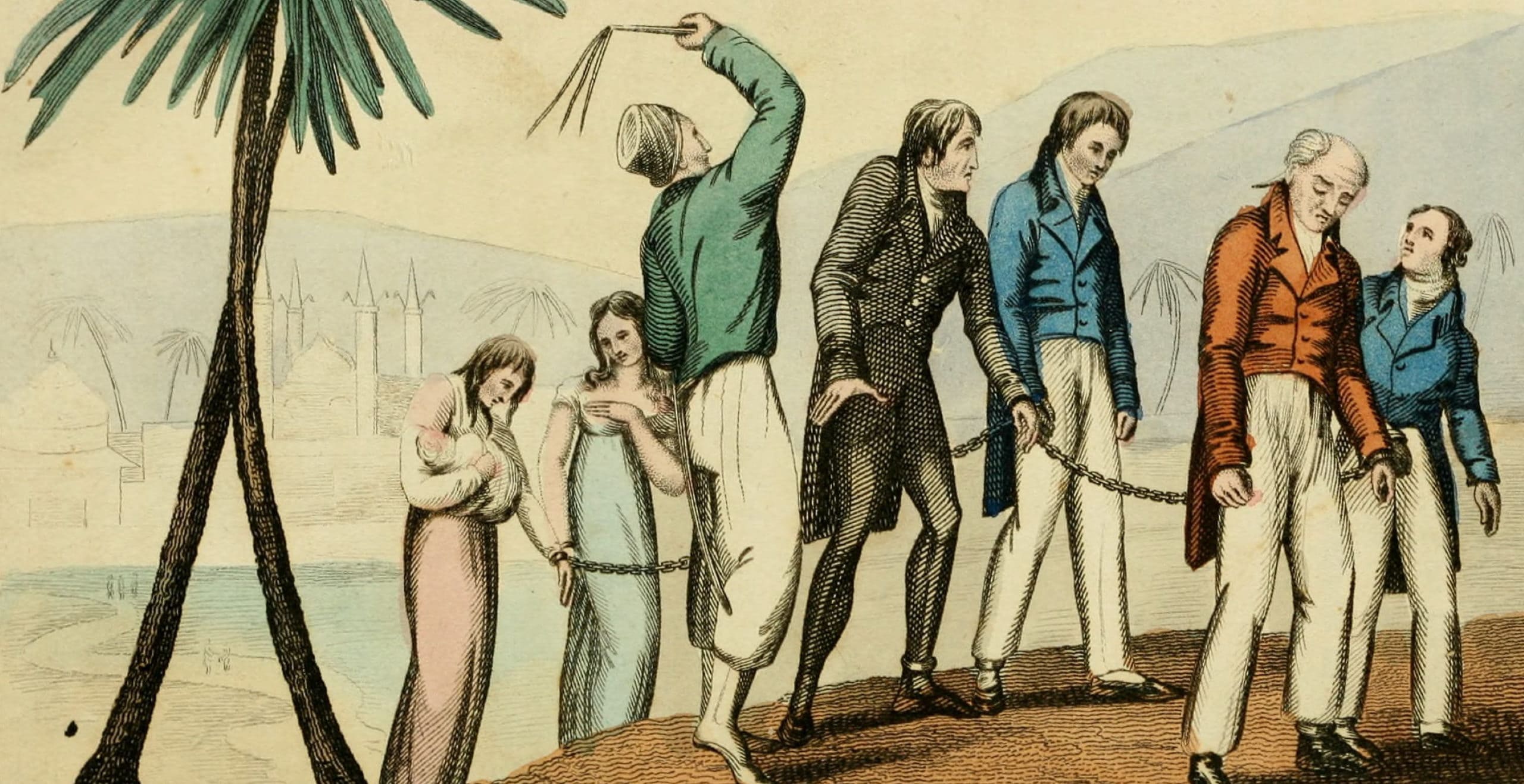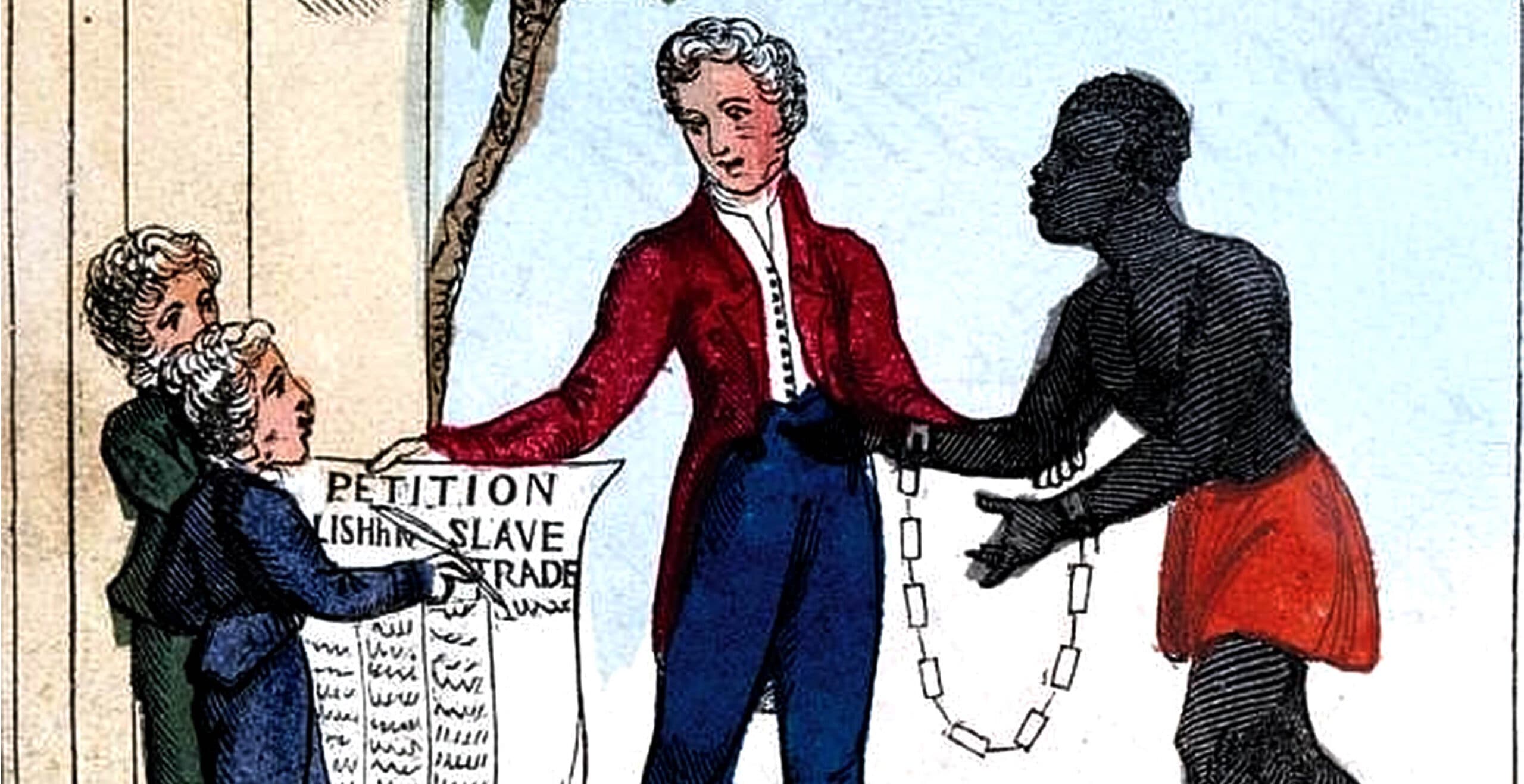Some of Scotland’s historical highways are well-trodden. The names of William Wallace, Robert Bruce, Mary Queen of Scots, and Bonnie Prince Charlie are known across the globe. The name of Helen Gloag is scarcely known, yet Helen played a unique part in Scotland’s history. The blacksmith’s daughter from Perthshire in Scotland became the fourth wife of Sultan Sidi Mohammid ibn Abdullah, ruler of Morocco, and her sons nearly became the inheritors of his domain.

Helen Gloag was born in the village of Wester Pett near Muthill in Perthshire in 1750, the daughter and eldest child of Andrew Gloag and Ann Kay. After the death of his wife, Andrew remarried, and the relationship between Helen and his new wife was a challenging one. The locals described, and still describe Helen as a beauty with fair skin, red hair, and green eyes. Helen was clearly growing into a bonnie lass. Her stepmother did not approve of at least one of her friendships, with a farmer in the area who was called John Bayne, or Byrne, and was some years older than Helen.
Of this period of her life, there remains some local lore. She was beautiful, enjoyed playing cards, and was an Episcopalian. This was a dangerous time to be either an Episcopalian or a Jacobite in Scotland, and one of Helen’s relatives was said to be a Jacobite sympathiser.
At the age of nineteen, Helen was more than ready to escape the restrictions of her home life. Along with other young Scotsmen and women, she took ship at Greenock to sail to North Carolina in search of a new and more prosperous life. Just a fortnight into the voyage their vessel was attacked by corsairs from Morocco. The men on board were rounded up and most were killed, while the women were held securely below decks to be taken to the slave market in Algiers.
For over a century, the corsairs, particularly those from Salé in Morocco, had raided the coasts of Britain, Ireland, and Europe, capturing slaves and booty for the rulers of North Africa. Once a trading port that had seen flourishing activity between English merchants and Moroccans, Salé had become a by-word for danger and piracy by the mid-seventeenth century. Using the speedy xebec ships that gave them their name of “corsairs”, they attacked and boarded all kinds of vessels swiftly and ruthlessly.
Some of the captive people from Britain not only survived but built lives and even careers in North Africa. One of the most famous accounts is that of the Englishman Thomas Pellew, captured in 1716, who became the personal slave of Morocco’s powerful ruler Moulay Ismail. Despite the continuing raids of the corsairs, diplomatic overtures also continued between England and Morocco throughout the late seventeenth and early eighteenth centuries.
This diplomacy touched on an area of personal interest for me, since my own research focusses on the Galloway horses of Scotland, the running-horse stock in Britain that would in turn form the foundation stock of the Thoroughbred racehorse. Galloways were among a shipment of gifts including English cloth and muskets sent to Moulay Ismail in 1681 at a time of great tension between England and Morocco.

However, no diplomatic intervention was there to prevent Helen Gloag at the time she was sold. A wealthy and influential merchant saw Helen in the slave market in Algiers, purchased her for a high price, and with an eye to gaining royal notice, offered her to the vizier of Sultan Sidi Mohammid ibn Abdullah. This ruler was not in the same mould as the despotic Moulay Ismail his grandfather, and during his rule significant changes were seen in his country.
Some of these changes have been credited to the influence of Helen Gloag, who became not just his concubine, but his fourth wife, and subsequently his principal wife. Captives were released, and the slave markets – from which the British had benefitted in earlier times – were gradually closed down. Greater tolerance for all beliefs prevailed, and the ports became significant trading centres for goods from the Islamic world. The women in the harem received medical treatment from at least one visiting European physician. Trade agreements were established and the Sultan supported Britain in military ventures.
Helen was in regular contact with her brother Robert, a sea captain, and sent items from Morocco to her family and friends in Perthshire, as well as keeping up correspondence with them. This suggests that she had accepted her role as Sidi Mohammid ibn Abdullah’s wife and the mother of his two sons, and had sufficient autonomy to maintain other contacts too. To suggest she had influence upon her husband’s political and other decisions is not unreasonable.

This influence has been credited to her beauty and sensuality, both of which are prominent in fictional and some factual accounts of Helen’s life. Yet influence can equally be credited to character, experience, and perhaps her background. As one who had been enslaved herself yet risen in the world, it seems likely she would have sympathy for others with similar experiences.
Helen’s own security only lasted as long as her husband’s life. When he died in 1790 she was nearly forty years old and her sons were still not old enough to hold power. A nephew of the sultan should have ruled in their stead as he was Sidi Mohammid’s choice. However, Mulai Yazeed, son of Sidi Mohammid ibn Abdullah and a German woman captured by corsairs, seized control of the country. His first acts were to kill any rivals to his power, including the two sons of Helen who had been sent for refuge to Christian monasteries.
It appears that Helen appealed to the British authorities for help, and it is possible it was despatched but then turned to support Mulai Yazeed in an attempt to take the town of Cueta from the Spanish. Helen’s own story ends at this point, presumed killed in the years of war and unrest that followed until Mulai Yazeed’s own death not long afterwards.
In Scotland, Helen is sometimes given the name “Empress of Morocco”, though this was never the case. Wives of Moroccan rulers were not given titles at this time, and Helen’s own status was reflected in the title “fourth wife”. Nonetheless, it is clear that she was capable of adapting and surviving as the sultan’s wife, and retaining links with her family and roots. Some have doubted the truth of Helen’s story, viewing it as mostly nineteenth century gloss. It is mostly thanks to the memory of her in her local area that she is known at all. While aspects of her life and death remain enigmas, Helen Gloag clearly never forgot her origins in Scotland.
Dr Miriam Bibby is a historian, Egyptologist and archaeologist with a special interest in equine history. Miriam has worked as a museum curator, university academic, editor and heritage management consultant.
Published: 29th January 2024









